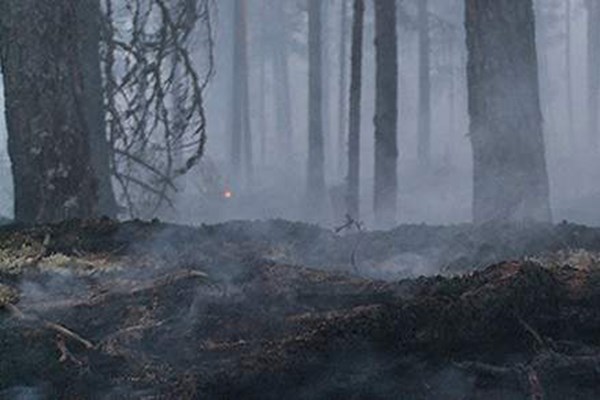Background
The forest fire which occurred in the county of Västmanland in central Sweden in 2014 constituted the largest forest fire in Sweden in modern times. It started in Sala municipality and caused extensive damage in the neighbouring municipalities of Norberg, Fagersta and Surahammar, ultimately covering an area of 14 000 ha and dramatically altered the character of the area.
The project
In this context the impact of the fire was studied in order to realise how people’s relationship to their landscape changes when their environment is ravaged by a catastrophic event; how landscape related identity is affected by drastic change. It is not just the physicality of landscape which is altered but also how it is perceived.
As such the focus of this study was to understand how a catastrophic incident results in not just a material or economic loss but also an existential loss.
What does the fire mean for those who have a relationship with this landscape, and how can an understanding of this inform future decision making for the landscape?
- How is the landscape related identity of those who experience a catastrophic change affected?
- How does the impact on the physicality of landscape impact on identity?
- What does it mean for peoples relationship to place when the landscapes physicality is drastically altered?
- How does it differ with the degree of involvement in the landscape?
- What was important before the fire?
- Does it remain?
- Can it be reproduced?
Landscape
The European Landscape Convention defines landscape as:
an area, as perceived by people, whose character is the result of the action and interaction of natural and/or human factors. (Council of Europe 2000Art 1a)
Landscape is more than just the physicality of the environment; it constitutes the relationships with our surroundings. Consequently landscape is recognised as a phenomenon known to those who experience it.
Landscape identity
People-environment relations are important for the well-being of both individuals and society, providing a sense of belonging, meaning, identity and security. This realisation has resulted in increased attention within planning especially through the concept of identity. Within landscape issues identity increasingly becoming a relevant topic within landscape policy through the ELC:
[...] recognise landscapes in law as an essential component of people‟s surroundings, an expression of the diversity of their shared cultural and natural heritage, and a foundation of their identity. (Council of Europe 2000 Chap II, art.5a)
Approach
In this study we asked inhabitants, whose everyday landscape had been affected by the fire, to explain how their relationship to the landscape had altered. This included individuals evacuated from the area, those with property in the area and individuals adjacent to the fire area who had previously had ready access.
Questionnaire
The purpose of the questionnaire was to gain a general understanding from individuals regarding their identity in relation to the landscape prior to the fire and how the fire affected their identity. The results also identified individuals who were willing to be interviewed and inform the structure of subsequent interviews.
Interviews
Interviews were built on the questionnaires, providing a more nuanced individual understanding of experiences and connections. They helped to examine how the respondents began to re-connect to the landscape, both physically through activities and emotionally, once the area became accessible again. The interviewees covered different groups identified and willing to be interviewed from the first questionnaire.

